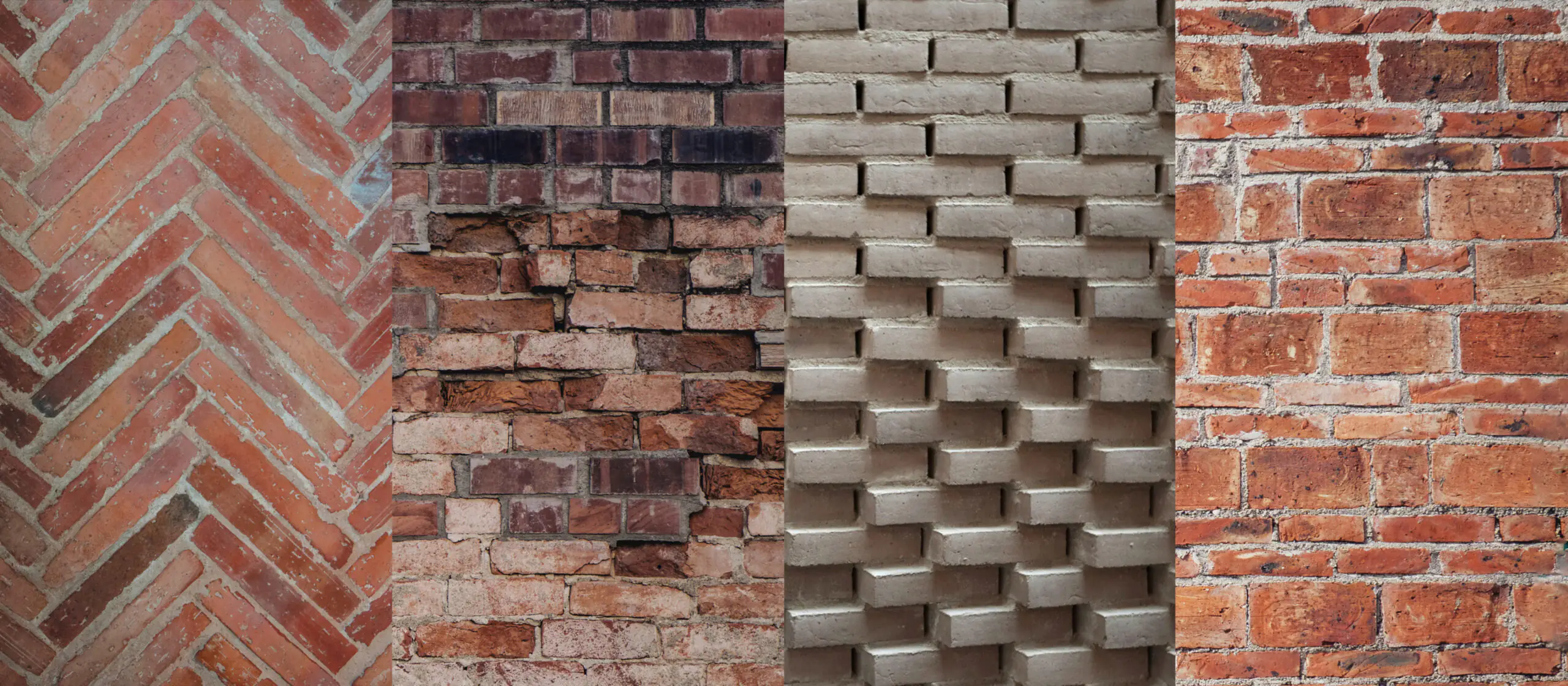
The first surviving examples of bricks date back to ancient Egypt and Mesopotamia: they date back to around 7000 BC. Egyptians preferred raw brick and learnt to fire it, as historians believe, only in the era of Roman rule (i.e. already in the I century AD), but in Mesopotamia the technology of firing existed in about 3000 BC.
From Ancient Rome, burnt brick passed to European civilisation, and from Mesopotamia to Asian civilisation. The building material, widely spread across the globe, remains popular to this day. The demand for bricks is due to their affordability and timeless appeal.
The prevalence of brick can be attributed to its availability, as the raw materials for its production can be found almost everywhere. The color of the brick reflects the mineral composition of local clay and gives buildings a warm, natural shade. Bonded by cement, brick creates a stable and comprehensible architectural volume suitable for various functions.
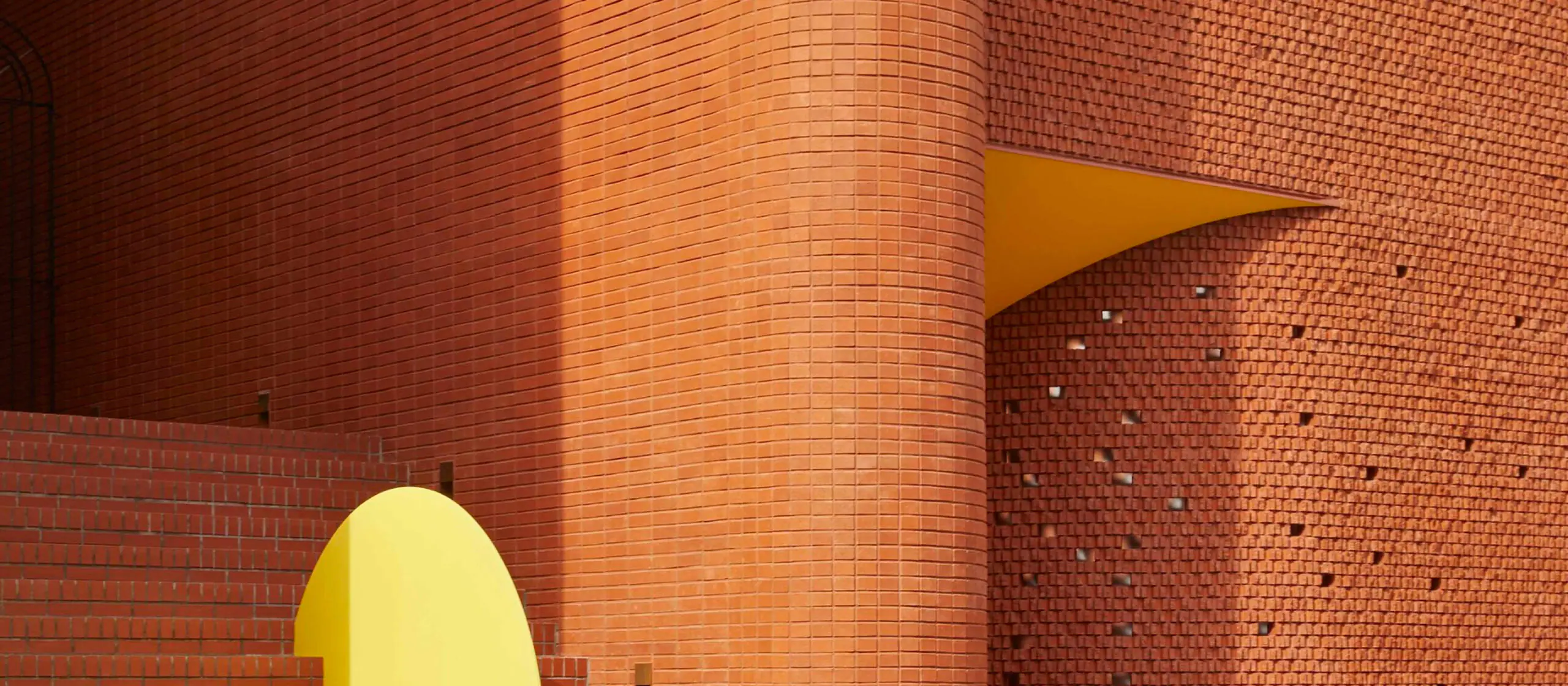
archdaily.com
With a wide range of block sizes and construction methods, brick masonry offers a highly versatile and expressive technique for architectural projects. Despite its humble appearance, brick continues to captivate with its artistic potential, whether applied in traditional or innovative designs.
Advantages
- Durability
- Thermal Efficiency
- Fire Resistance
- Sound Insulation
- Aesthetic Versatility
- Sustainability
Disadvantages
- Weight and Structural Limitations
- Labor-Intensive Installation
Clay brick is an environmentally friendly material due to its raw natural components and traditional way of production. It is highly valued for its prominent characteristics:
low thermal conductivity and high sound insulation. Brick walls provide a healthy indoor environment as they resist the influence of microorganisms, naturally regulate humidity, and prevent condensation on the surface.

stock.adobe.com
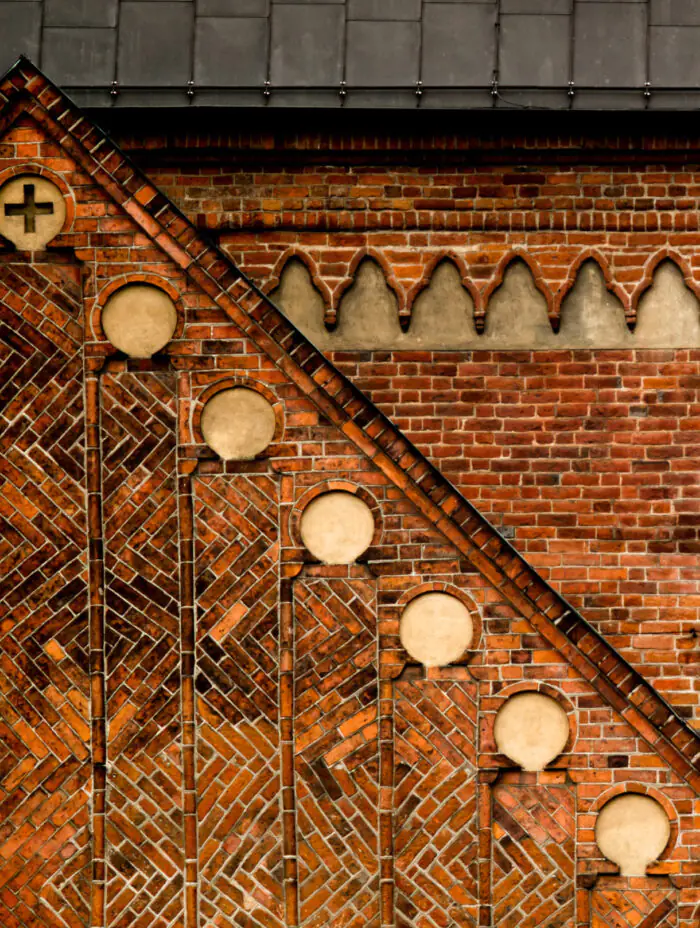
stock.adobe.com
The strength, coupled with its relatively easy rebuilding, allows brick buildings to be adaptable to contemporary urban needs. With careful dismantling, brick can be even reused. Thus, brick is suitable for recycling and closed building cycles, reducing carbon dioxide emissions within the construction industry. Energy efficiency and reuse possibilities make brick a sustainable option for modern construction.
What is more, brick can maintain an attractive appearance for centuries in any weather conditions. Apart from modern materials, brick embraces its aging process in a likable manner and ages gracefully. In renovated historical buildings, brick is often left exposed, since it adds a welcoming and cozy atmosphere. As brick buildings mature, they develop a gentle charm and warm appearance that could captivate over the years.
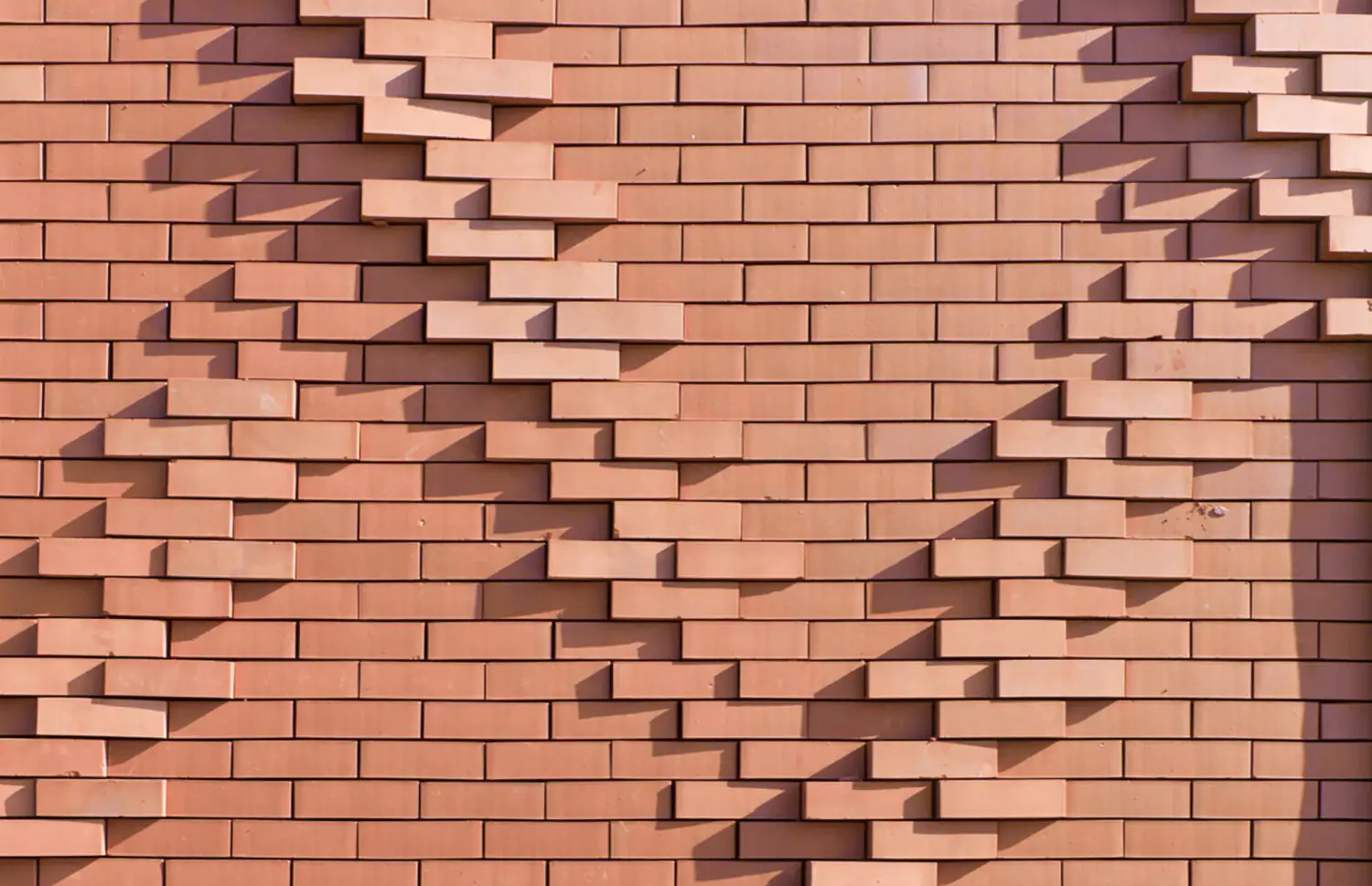
archdaily.com
Brickwork requires skilled and labor-intensive laying: this increases the construction time and the cost of the building erection works. Besides, brick buildings are limited to 15 floors in height due to the considerable weight and ultimate bearing capacity of the material. The heavy weight of brick structures requires a deep foundation, which is not always possible.
Therefore, in modern construction, bricks are rarely used for the construction of load-bearing walls, but often become a cladding layer for reinforced concrete envelopes. For facades, thin clinker bricks that are resistant to external influences are best suited, for load-bearing walls—strong building bricks, and for partition walls—hollow bricks, as their weight is much less than that of full-body bricks.
In Latvia, brick architecture has a rich and enduring tradition. Over a hundred brick kilns were operating in the 18th century all over the country, and mansory houses were widespread in most Latvian cities. In Old Riga, one can see the magnificent use of brick in places like Jaņa sēta, St Gertrude Old Church (Vecā Svētās Ģertrūdes Evaņģēliski luteriskā baznīca) and the Riga Cathedral (Rīgas Doms).
In the new center, the remarkable architectural monuments of the Art Nouveau style stand as a testament to the enduring legacy of brick buildings. Moreover, during the industrialization and capitalism development, a lot of industrial buildings were also built with bricks. Nowadays, the revitalization of industrial heritage exposes well-preserved brick masonry to the public in such projects as Zuzeum Art Center and Concert Hall in Hanzas Perons Cultural Center.
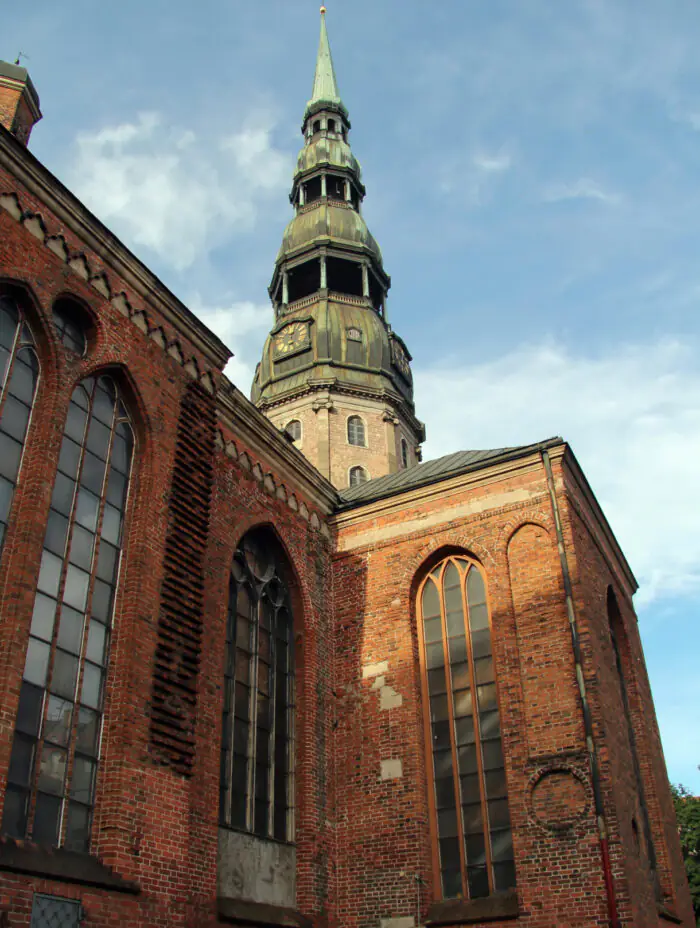
stock.adobe.com
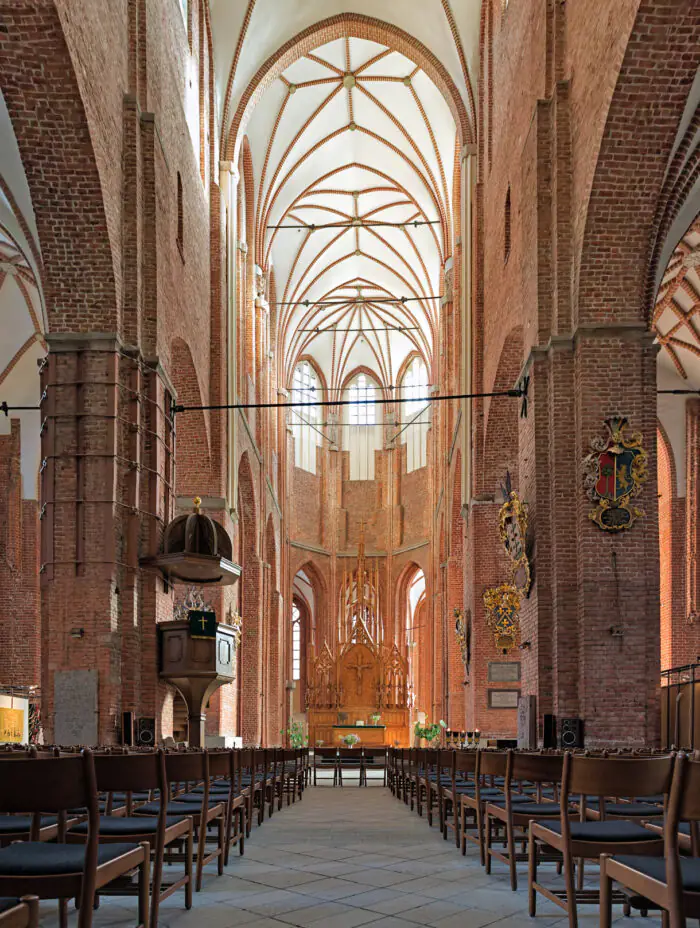
stock.adobe.com
St. Peter’s Church, an early brick building in Riga, is a remarkable architectural gem constructed in 1209. Over the years, it has undergone significant modifications, incorporating elements of Romanesque, Gothic, and Baroque styles. Though time has taken its toll, remnants of Gothic features have been preserved, including the outer walls, central portion, and columns of the central nave. In the 15th century, the church transformed under the guidance of master Johannes Rumešotels: a grand basilica was added, featuring three naves, ribbed vaulted ceilings, and a towering bell tower standing at an impressive height of 136 meters.
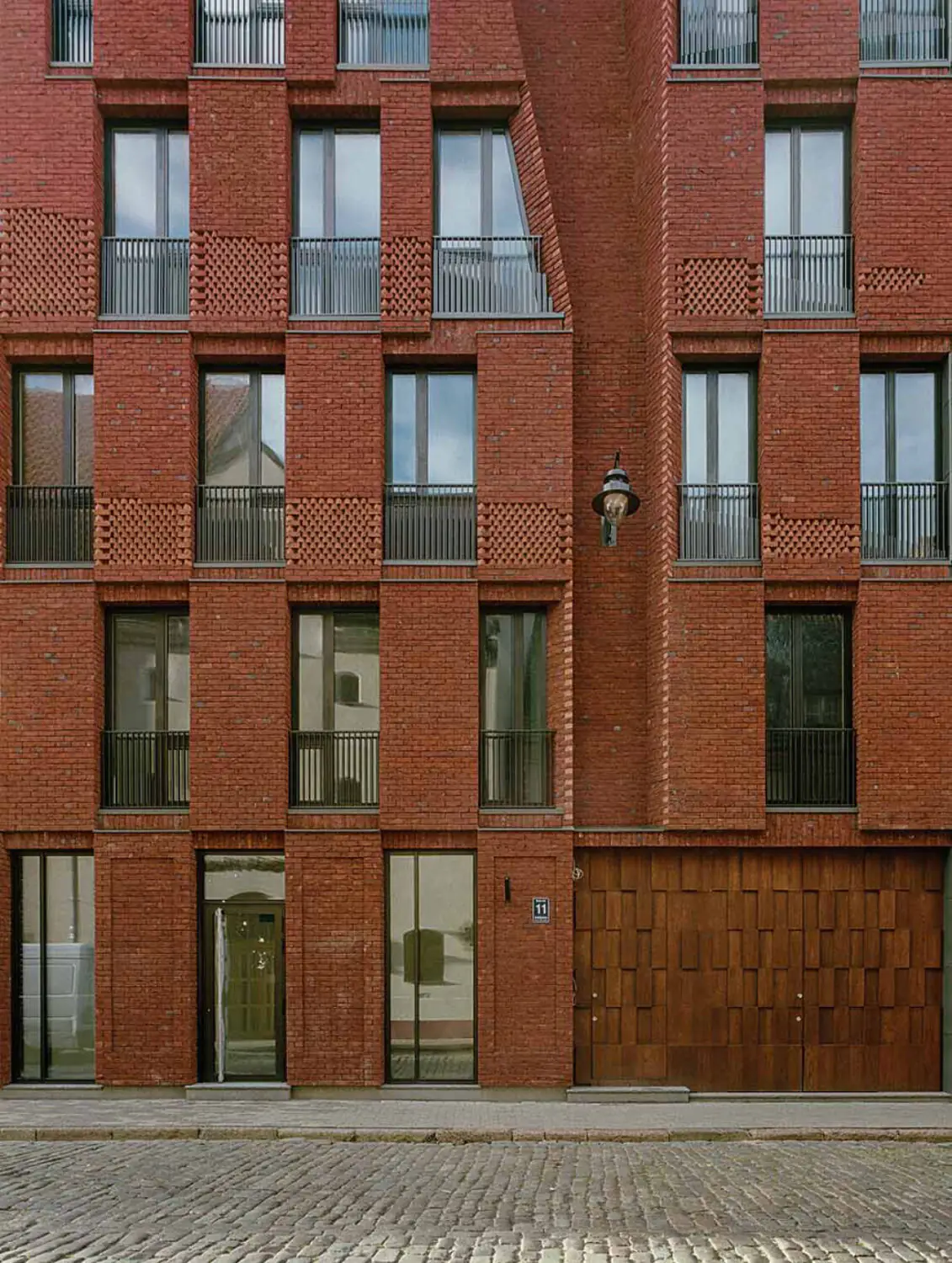
brickarchitecture.com
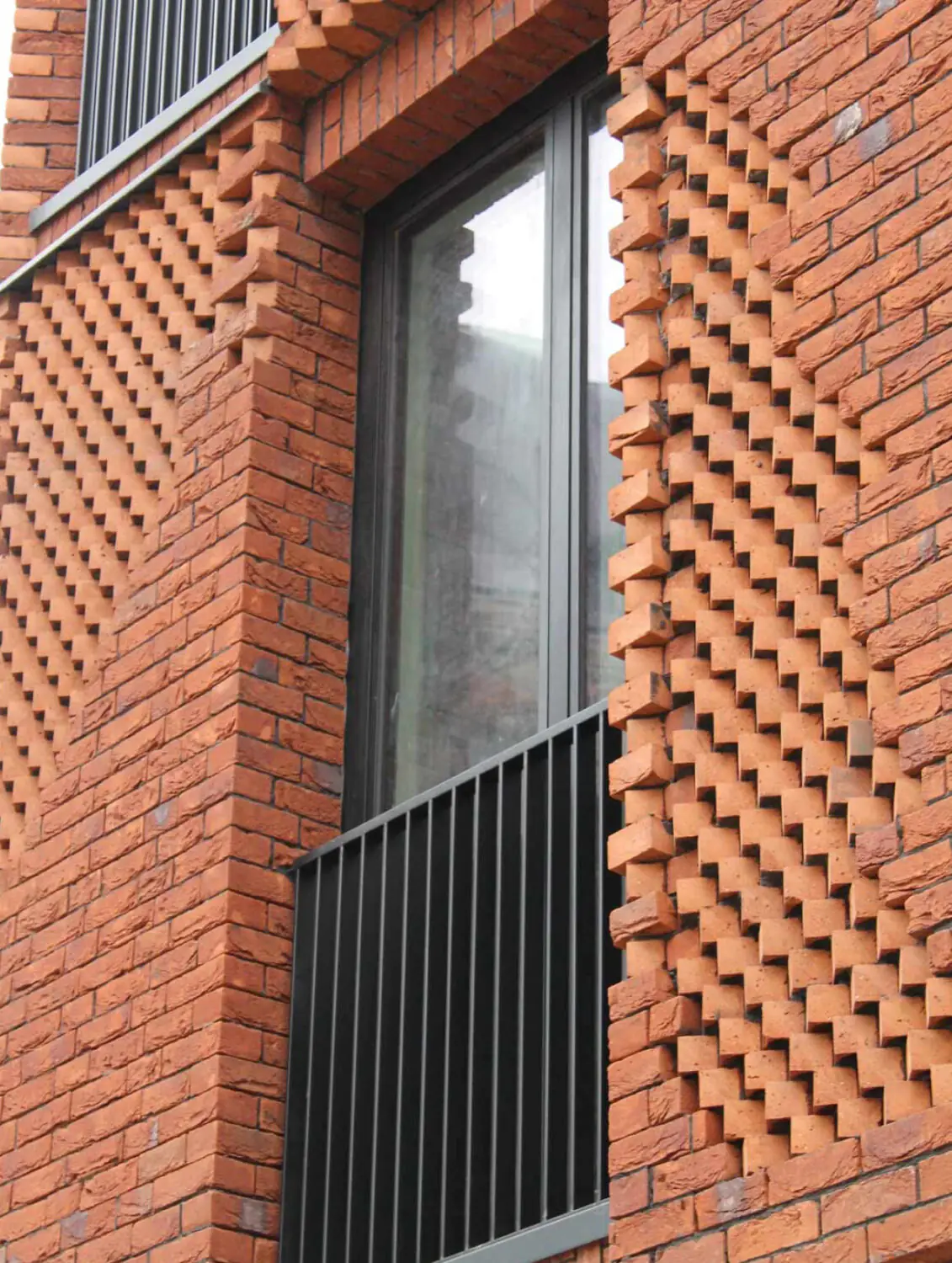
brickarchitecture.com
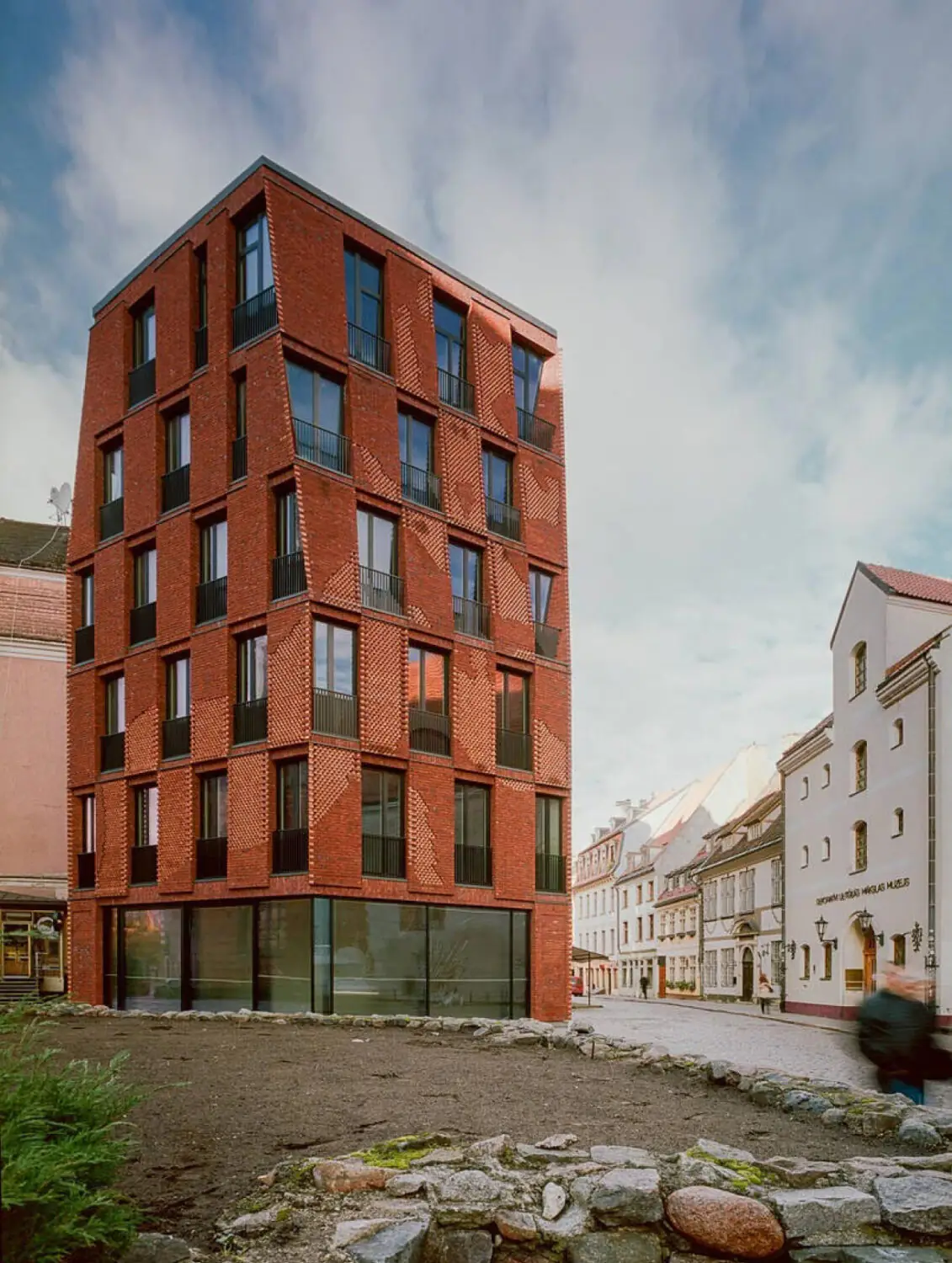
brickarchitecture.com
Moving forward to the present day, Riga proudly showcases a modern brick building that harmoniously captures the historical spirit of the city. The residential building on Skārņu Street stands as a successful example: built in 2015, it blends seamlessly with the historical atmosphere of the city, entering into dialogue with the brickwork of St. Peter’s Church.
Its six-story structure, with its intricate and artistic design, seemingly emerges from the adjacent wall of a neighboring house. The faсades are clad in red bricks: their texture is due to the authentic technology used to produce them. A closer look at the facades reveals stylised images of musicians from Bremen, created by designer Edgars Zvirgzdins. This fusion of modernity and history creates a captivating visual experience, embracing the essence of the city’s architectural heritage.
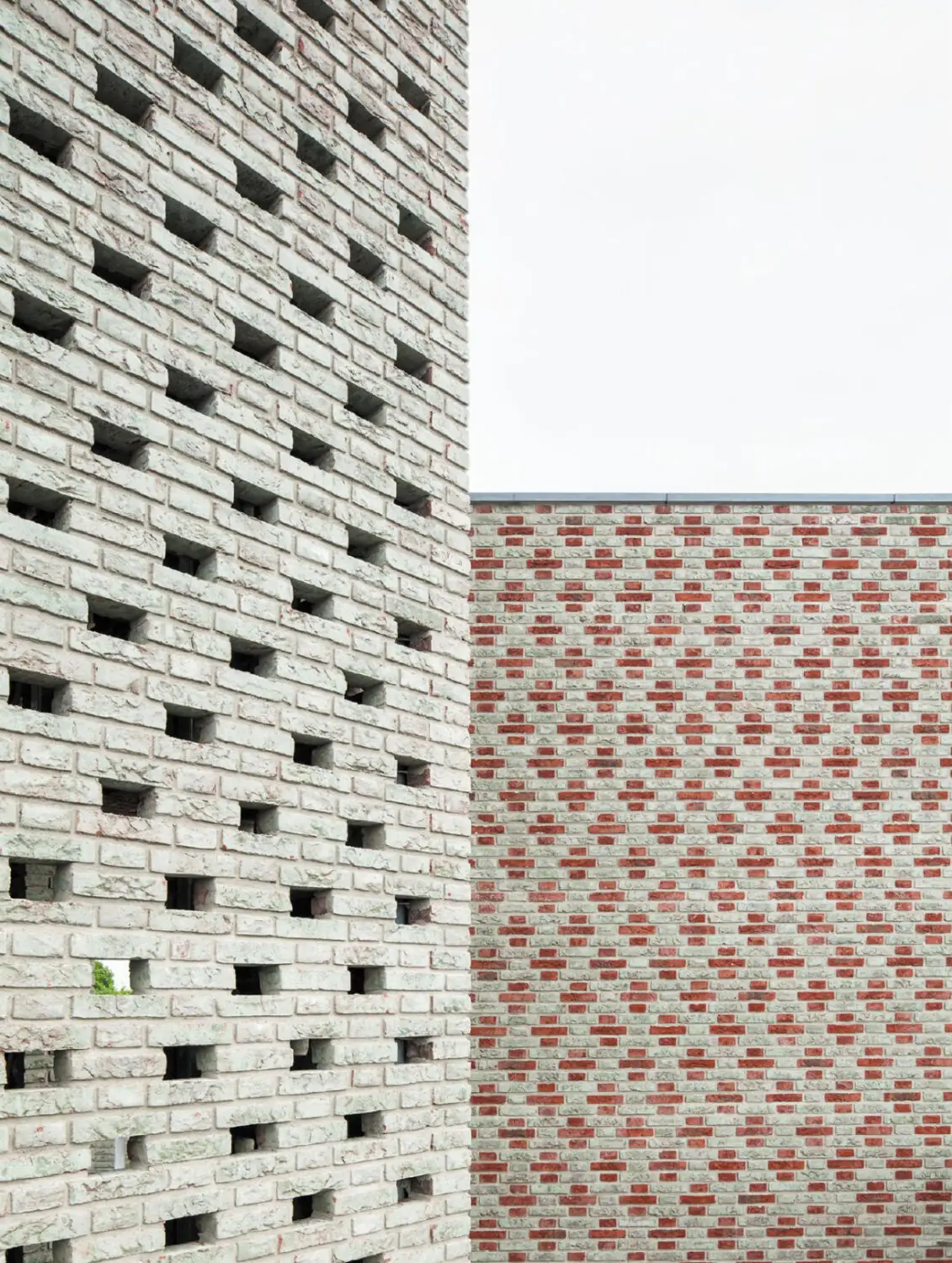
divisare.com
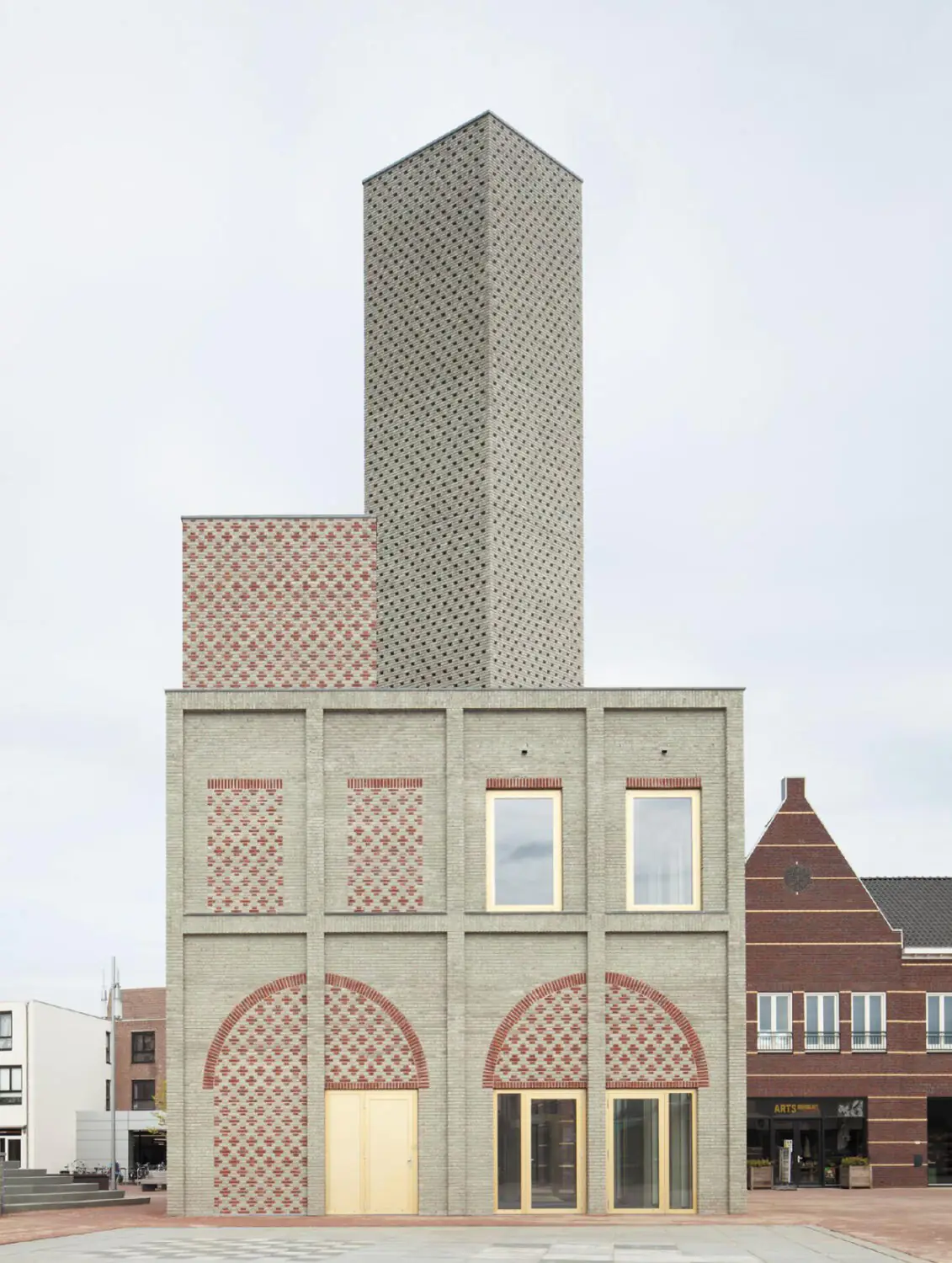
divisare.com
Recently, brick has been experiencing a noticeable rise in popularity. Contemporary architects are actively exploring new artistic techniques with brick. The emergence of non-typical block formats, a wide range of natural shades, unique variations in brickwork, digital approaches, and even robotics have expanded the decorative possibilities of traditional material. The result is textured walls, patterned facades, soaring arches, sculptural spatial solutions, intricate details, and elaborate pavement.
This renewed interest in brickwork highlights its versatility and wide range of applications without limitations in building typologies. Combining inventive technology and traditional craftsmanship methods ensures continuity in fragmented urban development.


